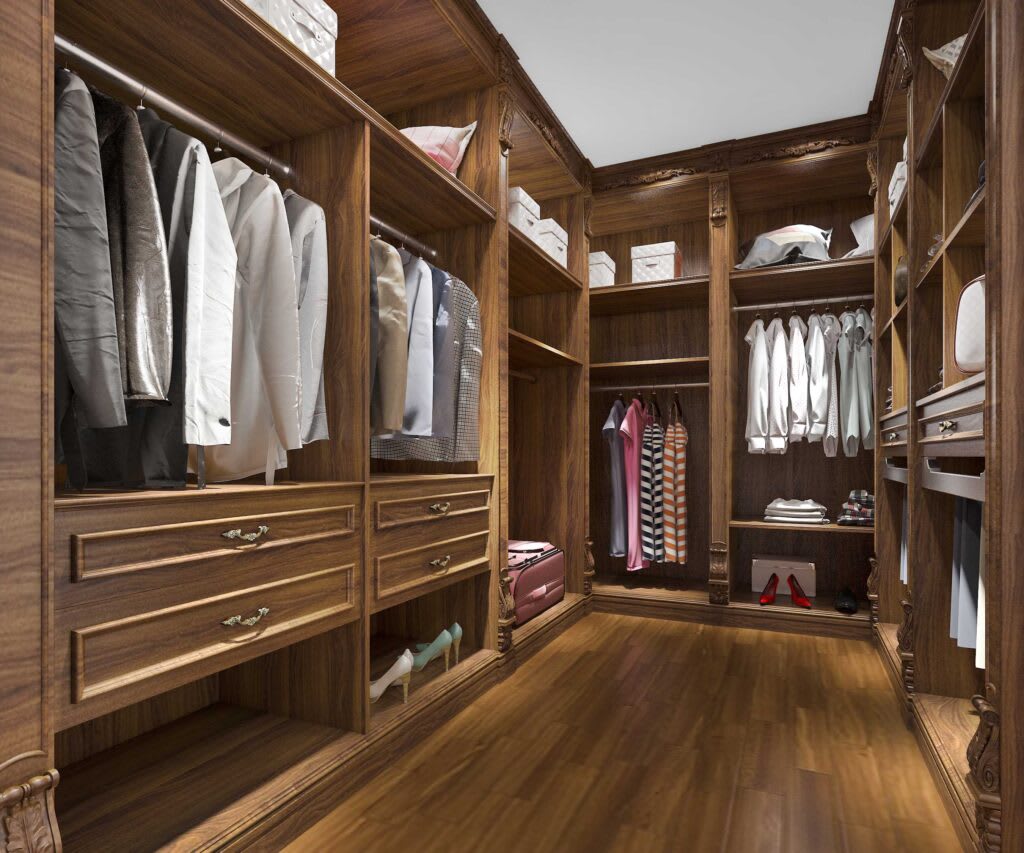Tips for building a wooden wardrobe
Tips for building a wooden wardrobe

Tips for building a wooden wardrobe Building a wooden wardrobe can be a rewarding and satisfying project. Here are some tips to help you get started and ensure a successful outcome:
Plan and Design: Start by creating a detailed plan and design for your wardrobe. Consider the dimensions, storage requirements, number of shelves, drawers, and hanging space you need. Having a clear plan will make the construction process more straightforward.
Choose the Right Wood: Select a high-quality wood species for your wardrobe, such as oak, cherry, maple, or birch. Different woods have unique appearances and characteristics, so choose one that matches your style and budget. Make sure the wood is properly dried to avoid warping later on.
Tools and Safety: Gather the necessary tools for the project, including a saw, drill, hammer, screws, sandpaper, measuring tape, and safety gear like safety glasses and gloves.
Preparation: Prepare the wood by cutting it to the required dimensions. Ensure all pieces are straight, smooth, and free of defects. Sand the surfaces to remove any rough spots or splinters.
Joinery: Consider using strong and reliable joinery techniques such as mortise and tenon joints or dovetail joints for added stability and durability.
Assembly: Assemble the wardrobe step by step, following your design and plan. Use clamps to hold pieces together while you attach them to ensure accurate and tight-fitting joints.
Finishing: Apply a finish to protect the wood and enhance its appearance. You can use stains, paints, or clear varnishes depending on your preference. Always apply finishes in a well-ventilated area and follow the manufacturer's instructions.
Hardware and Accessories: Choose appropriate hardware for doors and drawers, such as hinges, handles, and knobs. Ensure they are installed securely and align properly.
Weight Distribution: Keep in mind the weight distribution while designing the wardrobe. Place heavier items at the bottom and lighter ones at the top to maintain stability.
Allow for Expansion: Wood expands and contracts with changes in humidity and temperature. Leave some room for wood movement in your design to prevent warping or cracking over time.
Quality Checks: Regularly check for any structural issues or loose components during the construction process and make adjustments as needed.
Double-Check Measurements: Measure twice, cut once. Accuracy is crucial in woodworking, so always double-check your measurements before making any cuts.
Ask for Help: If you're new to woodworking or building large furniture pieces, don't hesitate to seek advice or assistance from experienced woodworkers or friends who have woodworking skills.
Remember that building a wardrobe is a time-consuming project that requires patience and attention to detail. Take your time and enjoy the process of creating a beautiful and functional piece of furniture that you can be proud of.
Plan and Design: Start by creating a detailed plan and design for your wardrobe. Consider the dimensions, storage requirements, number of shelves, drawers, and hanging space you need. Having a clear plan will make the construction process more straightforward.
Choose the Right Wood: Select a high-quality wood species for your wardrobe, such as oak, cherry, maple, or birch. Different woods have unique appearances and characteristics, so choose one that matches your style and budget. Make sure the wood is properly dried to avoid warping later on.
Tools and Safety: Gather the necessary tools for the project, including a saw, drill, hammer, screws, sandpaper, measuring tape, and safety gear like safety glasses and gloves.
Preparation: Prepare the wood by cutting it to the required dimensions. Ensure all pieces are straight, smooth, and free of defects. Sand the surfaces to remove any rough spots or splinters.
Joinery: Consider using strong and reliable joinery techniques such as mortise and tenon joints or dovetail joints for added stability and durability.
Assembly: Assemble the wardrobe step by step, following your design and plan. Use clamps to hold pieces together while you attach them to ensure accurate and tight-fitting joints.
Finishing: Apply a finish to protect the wood and enhance its appearance. You can use stains, paints, or clear varnishes depending on your preference. Always apply finishes in a well-ventilated area and follow the manufacturer's instructions.
Hardware and Accessories: Choose appropriate hardware for doors and drawers, such as hinges, handles, and knobs. Ensure they are installed securely and align properly.
Weight Distribution: Keep in mind the weight distribution while designing the wardrobe. Place heavier items at the bottom and lighter ones at the top to maintain stability.
TO CONTACT US TO KNOW ABOUT THIS POST ON
Email us your queries and Publications at [email protected]
https://www.facebook.com/vsconstructions.org
https://www.honeywebsolutions.com/
About the Creator
srasta real
easiest fabric to clean When it comes to fabrics, there isn't one specific fabric that is universally the easiest to clean, as it depends on the type of stain or dirt you're dealing with.
Enjoyed the story? Support the Creator.
Subscribe for free to receive all their stories in your feed. You could also pledge your support or give them a one-off tip, letting them know you appreciate their work.






Comments
There are no comments for this story
Be the first to respond and start the conversation.